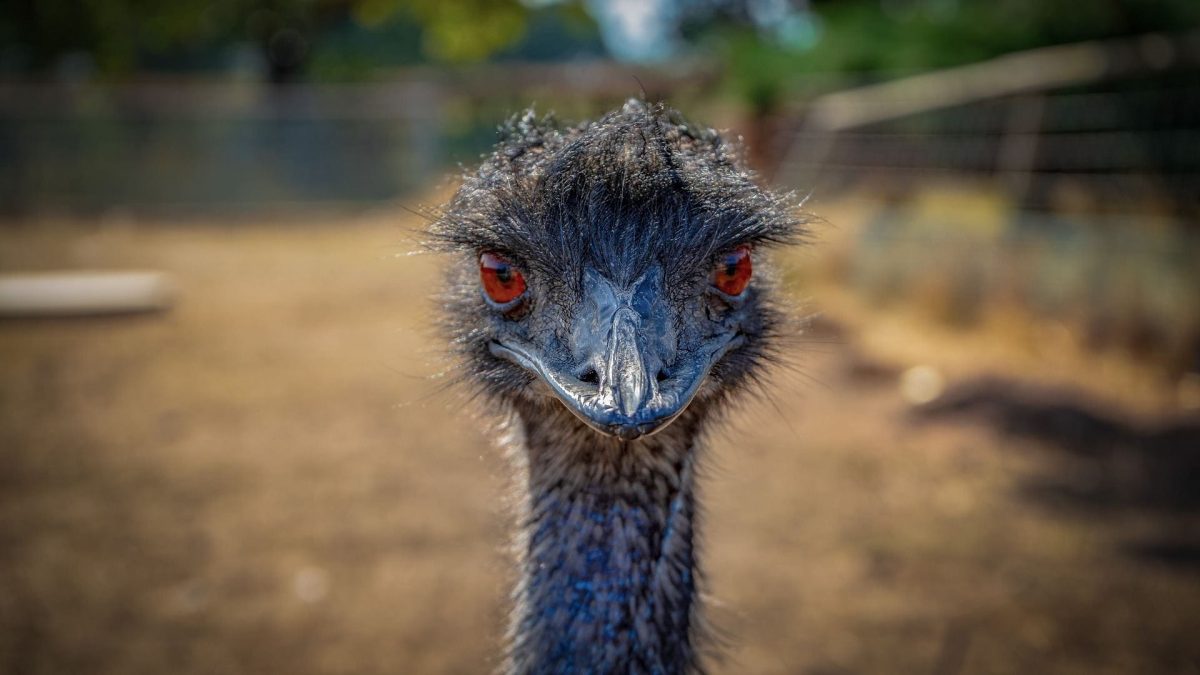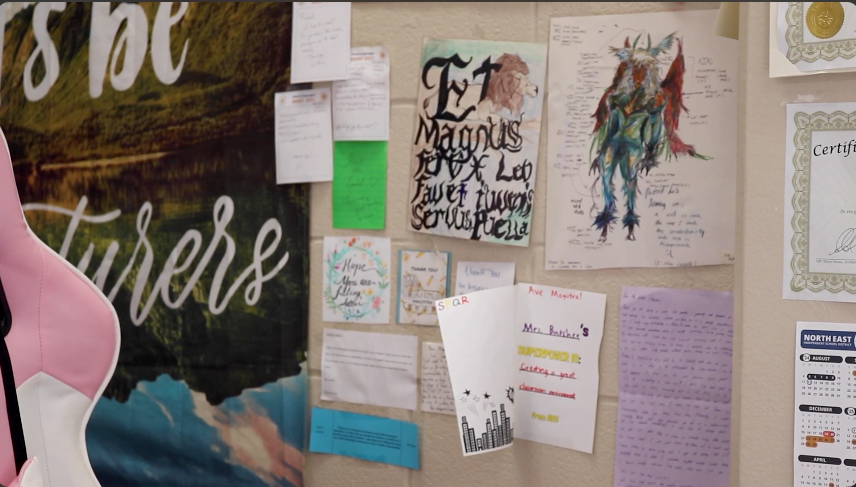by Joseph Sweeney | editor-in-chief
Four score and some millenia ago, our ancestors came together to revel in their intelligence, and give birth to modern human society. Now, with our even more advanced intelligence, we humans have come together to create societies in all sorts of strange places, giving birth to many varieties of invasive species around the world.
“They’re being brought in to solve some type of problem,” Environmental science teacher Christy Dennis said. “There’s usually some type of ecological problem, like a pest problem: something to where they think that will be the solution, without thinking about the long term as to what bringing in that new species is going to do. What if it migrates? What if it gets out of this contained area? What is it gonna do once it gets into other ecosystems?”
Invasive species exist all over the world in one form or another, though one thing is for certain: whether they’re introduced on purpose or by complete accident, they all have the same exact cause一our own stupidity.
“Most of the ones I know are the ones here are the salvia in the lakes, where it actually can be transported from one lake to another from boats. You’ll see signs saying to wash your boat down, because when you take it from one lake to another, it can get transferred that way,” Dennis said. “There’s the Zebra mussels up in the great lakes. There’s Asian carp, which you can find videos of where the fish are literally jumping out of the water and smacking people in the face because they’re so abundant. Then nutria in Louisiana: they’re big old water rats, and they’re actually at the point where people go out to shoot them and hunt them to get rid of them, just because of how bad they are. The cutsue vine in the south, which can grow up to a foot a day and overtake and destroy entire ecosystems.”
And while some of us live blissfully unaware of the size and scope of the issue, others, the women that glow and the men that plunder in the land down under, face the consequences of their actions nearly everyday.
“The cane toads in Australia were brought in to take care of some pests, but of course, they didn’t eat the pests at all and just ended up taking over. Now, they are all over Australia,” Dennis said. “I think rabbits as well are invasive, they were brought over by people.”
Though introduced to serve as the savior to the much valued sugarcane crop and vanquisher of the cane beetle menace, the aptly named cane toads became nothing more than average everyday rodents, now being utilized as literal golf balls in the equally self explanatory sport of cane toad golf.
“It’s like how we see squirrels or deer here nowadays, it’s just such a part of their natural landscape, but they’re also toxic, so they’re affecting some people’s pets around towns,” Dennis said. “They get run over a lot too; they’re roads are covered in them, and they’ll just drive over them. So people don’t really like them, they just kind of ignore them because they’re so many.”
Though one may be tempted to joke about these toads “breeding like rabbits,” that phrase is much more applicable to rabbits themselves. The invasive Australian rabbit population was pioneered by an Englishman known as Thomas Austin, who introduced a couple dozen hares as hunting game, though they later bred into the millions. Austin is known for this reason and this reason alone.
But of course, when thinking of Australian wildlife, there’s always one that jumps into our minds, mostly because it can’t fly.
“In the ‘30s during the great depression, the emus being this large bird that was an environmental pest for Australian farmers,” AP World history teacher Eric Wetmore said. “The farmers asked the army for aid in ridding the flocks of birds, and so [Defense Minister] Sir George Pierce ordered that the army cull the emu population. He’s later referred to by parliament as ‘Minister of the Emu War.’ Reading up on it, these birds must have been schooled in guerilla warfare, because right when the army would set up, the birds would disperse. See, machine guns back then were huge and heavy, so they mounted machine guns on top of a truck, so the truck going over the terrain was so restrictive and inefficient that the emus managed to get away.”
Though mission accomplished was declared by Pierce and the military, in reality only about 1,000 of the 20,000 emus were killed in the conflict, compared to the over 9,000 bullets spent.
This isn’t to say that Australia isn’t the only nation to participate in such conflicts, however, as China, during its communist transition, waged a similar war against birds, leading to disastrous consequences.
“The Great Leap Forward was the brainchild of Mao Zedong who had just, about ten years before, had won control of China in a long civil war against Chiang Kai-shek,” Wetmore said. “Mao was trying to industrialize China along the lines of the United States; by 1988 they expected to reach that American industrial capacity. He organized China into these 5,000 person communes that were supposedly going to be self-sufficient. Each commune had production goals, and it quickly raveled apart. One of the things that killed people, aside from obviously starvation, was punishments. As food became more scarce, more people were being executed for crazy things like stealing grain.”
The four pests campaign was a large chapter in the Great Leap Forward, and waged war against rats, flies, mosquitoes, though most critically, the native sparrow population, which were pinned for the destruction of crops nationwide.
“It was to aid in industrialization, and it broke down the environment while they were at it,” Wetmore said. “They said that sparrows eat a pound of grain a day, per sparrow, and I don’t even know if that’s right: I’m not a biologist!” Wetmore said. “So they started killing sparrows by the thousands and thousands and thousands, so much so that it disrupted the natural food chain, and then you have locusts multiplying by the millions, which fed on the grain. So another cause of starvation right there: hunting down the sparrows. They finally realize ‘oh yeah; don’t do that.’”
Unlike the Emu war, this sparrow-conflict is no laughing matter.
“It’s straight up murder, but how did it get to that point?” Wetmore said. “Well, mismanagement of farms, also drought; China has drought and rain problems to this day, so weather kind of played a huge role in it. And then, a lot of farmers stopped farming because there was a huge push to get iron. So they burned so much wood in the iron-making process in what I would call these backyard Walter White meth labs for iron. They burned so much wood the trains didn’t have coal to get from one place to another, and it just spiraled out of control and it collapsed in on itself. It led to the starvation of, and they are still not really sure, 50 million people on the high end, though some people say it was as low as 15 million. And after all that, Mao was kind of forced from power by more moderates within the Chinese government, only to return for the cultural revolution.”
To be serious for one moment, ecological disturbance is a definite issue in our society. Though jokes regarding infestations such as the emu war and the cane toad invasion are certainly okay, it’s important for people to not only study world history, but also the environment to make sure no conflicts like these arise again. To that end, it should also be kept in mind humanity is constantly moving towards the other direction of species disturbance.
“I can name it where it did work out: with the buffalo populations in the old west, post and prior-civil war,” Wetmore said. “Where it didn’t work out? I don’t know. We’re really efficient at that unfortunately.”








